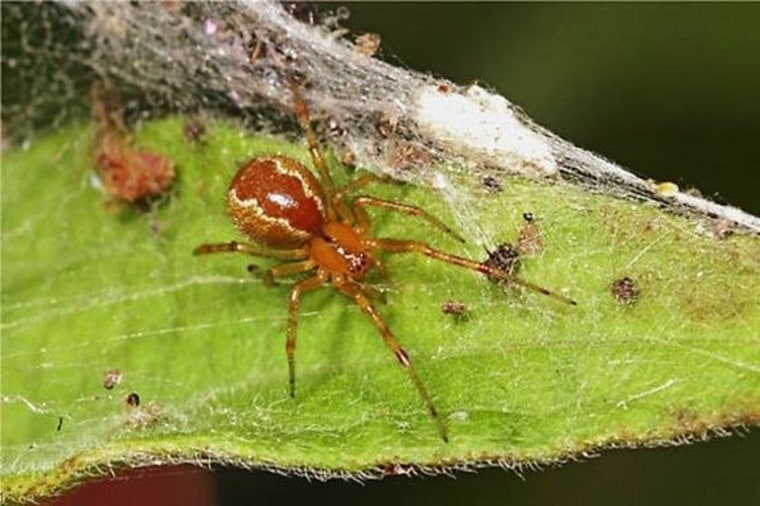Female spiders that live together in colonies may adopt "warrior" or "nanny" roles, similar to how insects can form "soldier" and "worker" castes, scientists say.
These new findings shed light on how differences in personality can help divide up labor in species, the researchers added.
Sign up for top Science news delivered direct to your inbox.
Ants, bees, wasps, termites and other social insects form colonies that are often divided into specialized castes. These castes may include sterile workers and soldiers, as well as reproductive queens and males.

Researchers investigated the comb-footed spider (Anelosimus studiosus), which can be found throughout the Americas, from New England to northern Argentina. These spiders form colonies, hunt together and share their webs and prey.
The scientists noted that there are two kinds of female spiders in this species: aggressive females and docile females.
Past research has shown that aggressive females are more likely than docile females to attack prey and invaders. Still, "although docile females don't participate very much at all in prey capture, aggressive spiders share prey with docile individuals," Wright said. "Everyone gets to eat."
Researchers studied individual spiders and created 60 laboratory colonies, each made up of two aggressive and two docile female spiders, and investigated how those females divided up labor.
Individually, aggressive females were more than twice as effective as docile females at capturing cricket prey, and they also constructed webs that retained cricket prey about two-thirds longer than webs constructed by docile females. Furthermore, in colonies, aggressive females repaired webs, attacked potential prey and defended against invasive funnel weaver spiders (Barronopsis texana) nearly three times more often than docile females.
But individually, offspring raised by docile females were twice as likely to survive as young spiders raised by aggressive females. In colonies, docile females took care of the young three times more often than aggressive females, by guarding egg cases, residing within clusters of progeny or regurgitating to feed offspring.
"We were surprised at how good of parents docile spiders turned out to be," Wright said. "They're much better parents than aggressive spiders."
- Charles Q. Choi, Live Science
This is an article that originally appeared on Live Science. Read the entire story here. Follow us @livescience, Facebook & Google+.
Copyright 2014 LiveScience, a TechMediaNetwork company. All rights reserved. This material may not be published, broadcast, rewritten or redistributed.